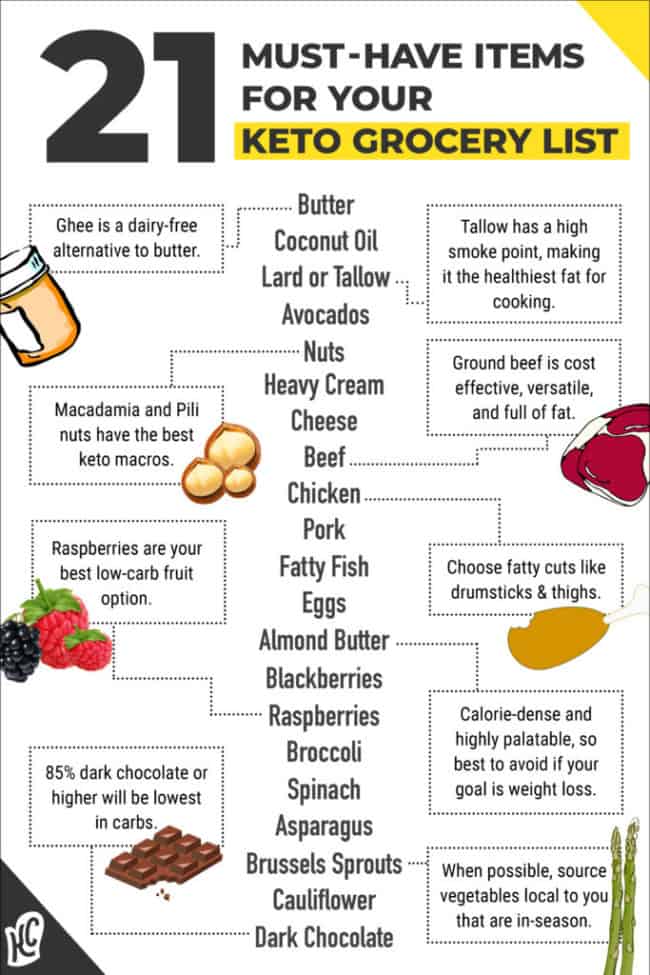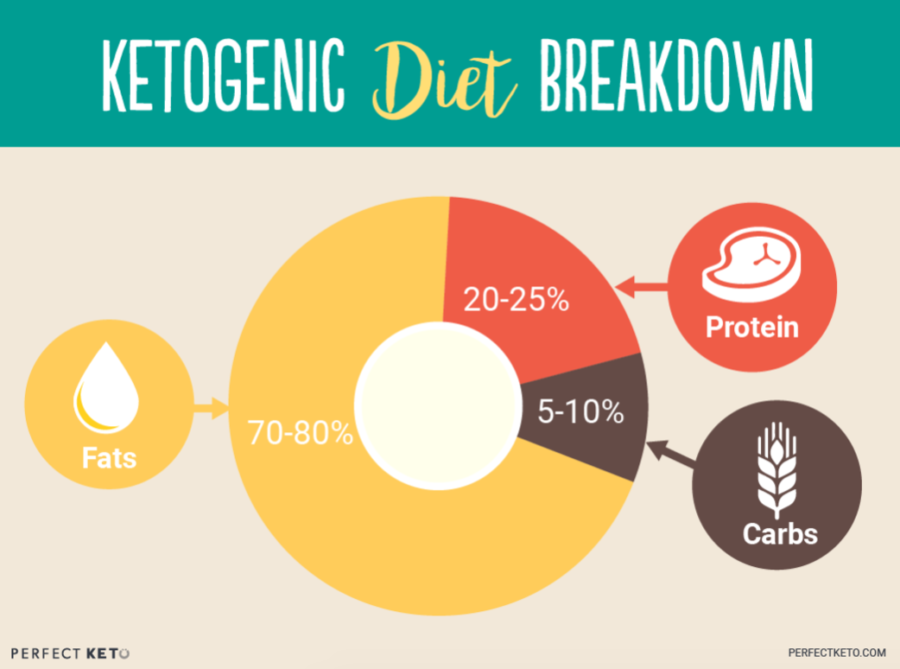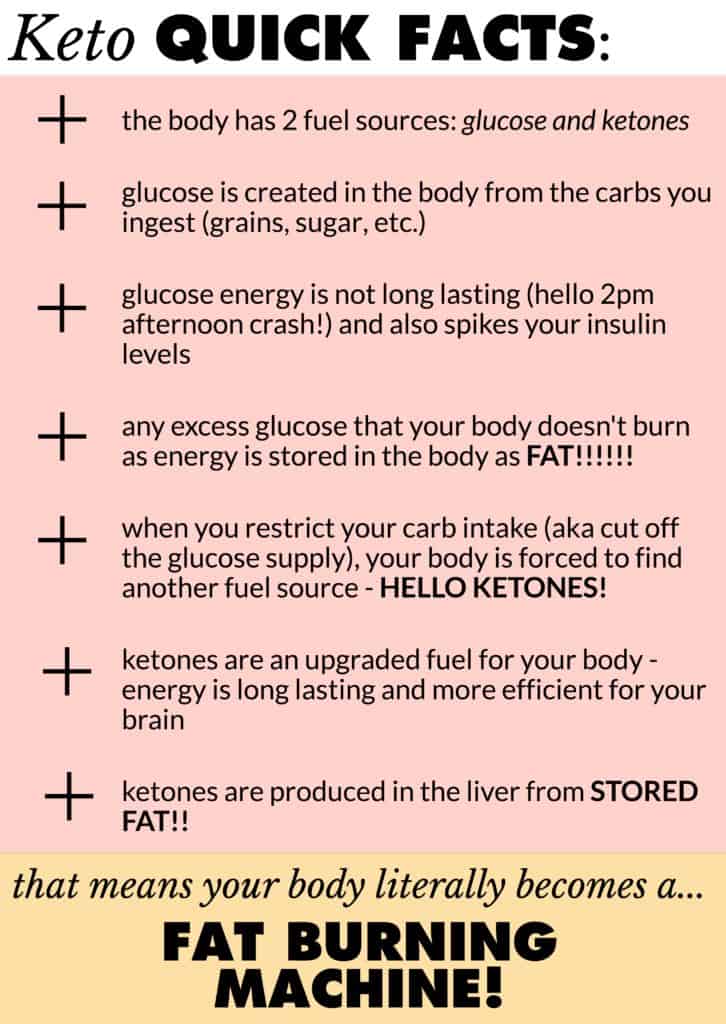Dive into the fascinating world of the Keto diet and uncover the science behind its proven efficacy for weight loss.
Table of Contents
- Introduction: What’s the Buzz about the Keto Diet?
- The Science Behind Keto: How It Works
- A Day on Keto: What Do You Eat?
- Keto Benefits: Why Do People Follow It?
- Getting into Ketosis: The First Steps
- The Possible Downsides
- Keto for Kids: Is It a Good Idea?
- Tips and Tricks for Sticking to Your Keto Diet
- Fun Keto Diet Experiments and Activities
- Real-Life Success Stories
- Making Keto a Lifestyle: Beyond the Diet
- Conclusion: Key Takeaways from the Keto Journey
- FAQs: Your Keto Curiosities Solved!
Introduction: What’s the Buzz about the Keto Diet?
Let’s dive into what a keto diet is and why many people are talking about it. Have you ever wondered what makes this diet plan so popular and how it works? Well, stick around and we’ll explore all the details so you can understand why everyone seems to be buzzing about the keto diet.
The Science Behind Keto: How It Works
When we eat food, especially carb-heavy foods like bread or pasta, our bodies break down these carbohydrates into smaller molecules called glucose. Glucose is the primary source of energy for our bodies, but when we restrict our carb intake, like on a keto diet, our bodies need to find an alternative fuel source.
That’s where ketones come in. In the absence of glucose, our bodies start breaking down fats into molecules called ketones. These ketones then become the new energy source for our bodies, fueling our muscles, brain, and other vital organs.
The Role of Ketones
Ketones play a crucial role in the keto diet. They are not only an alternative source of energy but also help our bodies enter a state called ketosis. Ketosis is when our bodies are efficiently burning fat for fuel, leading to weight loss.
Additionally, ketones have a unique ability to provide steady energy levels throughout the day, which can prevent energy crashes commonly experienced after consuming high-carb meals.
A Day on Keto: What Do You Eat?
When following a keto diet plan, you get to enjoy a variety of delicious foods that are low in carbohydrates and high in healthy fats. Some examples of keto-friendly foods include:

Image courtesy of www.dailyinfographic.com via Google Images
- Avocados: These creamy fruits are rich in monounsaturated fats that are good for your heart.
- Leafy Greens: Spinach, kale, and other leafy vegetables provide essential vitamins and minerals without the carbs.
- Meats and Seafood: Opt for fatty cuts of meat and fatty fish like salmon to keep your protein intake up.
- Cheese: Indulge in cheeses like cheddar, mozzarella, and cream cheese for a satisfying snack.
- Nuts and Seeds: Almonds, chia seeds, and walnuts are great sources of healthy fats and fiber.
Foods to Skip
On the flip side, there are certain foods that you should avoid on a keto diet to stay in ketosis, where your body burns fat for fuel instead of carbs. These include:
- Sugary Foods: Say goodbye to sugary treats like candy, soda, and baked goods that can kick you out of ketosis.
- Grains: Avoid bread, pasta, rice, and cereals as they are high in carbs and can interfere with your keto goals.
- Fruits: While fruits are healthy, some of them are too high in sugar to fit within the keto diet, such as bananas and grapes.
- Starchy Vegetables: Potatoes, corn, and carrots are higher in carbs compared to leafy greens and should be limited.
- Processed Foods: Stay away from processed snacks and meals that often contain hidden carbs and sugars.
Keto Benefits: Why Do People Follow It?
Let’s explore why people choose to follow the keto diet and the benefits it can offer.
Weight Loss Explained
One of the main reasons people hop on the keto train is for weight loss. By cutting out most carbohydrates and focusing on fats and proteins, the body shifts into a state called ketosis. In ketosis, the body burns fat for fuel instead of carbs, which can lead to shedding those extra pounds. It’s like putting your body on turbo mode for burning fat!
Other Health Benefits
Aside from weight loss, the keto diet boasts several other health benefits. Some folks claim to feel more energized and focused on keto, as their energy levels become more stable throughout the day. Additionally, some studies suggest that the keto diet may help lower blood sugar levels and improve heart health markers.
Getting into Ketosis: The First Steps
So, you’ve heard about the keto diet and you’re curious about giving it a try. But how do you actually get started with it and enter that magical state called ketosis? Let’s break it down into simple steps just for you.
Your Keto Diet: Making a Plan
First things first, you need to plan out your keto diet. This means figuring out what foods you can eat and which ones you should avoid. Your main focus will be on consuming high-fat, moderate-protein, and very low-carb foods. This balance is crucial for your body to switch from burning carbs to burning fats.
The Transition Phase
As your body adapts to this new way of eating, you may experience some changes. It’s common to feel a bit low on energy or even have some cravings in the beginning. But don’t worry, this is just your body adjusting to the new fuel source.
Tracking Your Progress
To know if you’re on the right track, you can use tools like ketone urine strips or a blood ketone meter to measure your ketone levels. This will give you a clear indicator of whether you’ve entered ketosis or not.
Remember, everyone’s body is different, so don’t stress if it takes a little time to get into ketosis. The key is to stay consistent with your diet and give your body the chance to adapt to this new way of eating.
The Possible Downsides
When starting a keto diet, some people experience what is known as the keto flu. It’s not really a flu, but rather a set of symptoms that can make you feel a bit under the weather for a short period. You might feel tired, moody, or even have some stomach issues. But don’t worry, this is your body adjusting to using fats for fuel instead of carbs. Just like a superhero fighting off a villain, your body is adapting to this new way of eating.
Monitoring and Maintaining Ketosis
To make sure you stay in the keto zone where your body burns fats for fuel, you need to keep an eye on what you eat. It’s essential to track your carb intake and make sure you are eating enough healthy fats and protein. Sometimes, it can be challenging to know if you’re still in ketosis, but with practice and patience, you’ll learn how to maintain this state.
Keto for Kids: Is It a Good Idea?
When it comes to putting your body in a state of ketosis, a lot of adults are giving it a try. But what about kids? Is the keto diet a safe and good idea for them too? Let’s explore this together.

Image courtesy of perfectketo.com via Google Images
Keto Considerations for Kids
Children have different needs than grown-ups. Their bodies are still growing and developing, so it’s essential to think about whether the keto diet is suitable for them.
Expert Opinions
Experts like doctors and nutritionists have looked into this question. Some say that the keto diet might not be the best choice for kids because they need a variety of nutrients to grow strong and healthy.
Tips and Tricks for Sticking to Your Keto Diet
Embarking on a keto journey can be incredibly rewarding, but staying on track with your keto diet can sometimes be challenging. Here are some tips and tricks to help you maintain your keto lifestyle:
Plan Ahead for Success
One of the keys to sticking to your keto diet is planning ahead. Take some time each week to map out your meals, make a grocery list, and prep keto-friendly snacks. Having keto-friendly options readily available will make it easier to resist temptation and stay committed to your diet.
Stay Hydrated
Drinking plenty of water is essential for everyone, but it’s especially important when following a keto diet. Water helps your body flush out toxins and aids in digestion. Plus, staying hydrated can help curb cravings and keep you feeling full between meals.
Find Support
Whether it’s joining a keto community online or having a friend or family member who can cheer you on, finding support can make a big difference in your keto journey. Surround yourself with people who understand your goals and can encourage you to stay motivated when things get tough.
Track Your Progress
Keeping track of what you eat and how you feel can provide valuable insights into what’s working for you on the keto diet. Consider using a food diary or a keto tracking app to help you monitor your progress and make adjustments as needed.
Practice Mindful Eating
Slowing down and savoring each bite can help you feel more satisfied and prevent overeating. Paying attention to your body’s hunger cues and focusing on the flavors and textures of your food can make your keto meals more enjoyable and fulfilling.
By incorporating these tips and tricks into your daily routine, you’ll be better equipped to stick to your keto diet and reach your health and wellness goals.
Fun Keto Diet Experiments and Activities
Embarking on a keto diet journey can be both exciting and challenging. To add some fun to your keto experience, why not try out these cool keto-related activities? Let’s explore how you can make your keto diet more enjoyable!

Image courtesy of cleanketolifestyle.com via Google Images
Keto Taste Testing
Invite your friends or family to a keto taste testing party! Prepare a variety of keto-friendly dishes and snacks and have everyone rate their favorites. Not only is this a fun activity, but it also allows you to discover new keto recipes that you love.
Create a Keto Recipe Book
Get creative in the kitchen by creating your own keto recipe book. Collect your favorite keto recipes, decorate the pages with drawings or stickers, and add any modifications you’ve made. This personalized cookbook will be a special keepsake of your keto journey.
| Fact | Explanation |
|---|---|
| Ketosis | The Keto diet forces the body into a state of ketosis, where it burns fat for fuel instead of carbohydrates. This leads to more efficient weight loss. |
| Reduced Appetite | High-fat and protein-rich foods keep you fuller for longer, reducing overall calorie intake and aiding in weight loss. |
| Insulin Sensitivity | By reducing carbohydrate intake, the Keto diet improves insulin sensitivity, which can help with blood sugar control and weight loss. |
| Stable Energy Levels | With fewer blood sugar spikes and crashes, those on the Keto diet often experience more stable energy levels throughout the day. |
| Increased Metabolism | Studies have shown that a low-carb, high-fat diet like Keto can increase metabolism and promote fat burning. |
Keto Meal Prep Challenge
Challenge yourself to a keto meal prep session! Set a timer and see how quickly you can prepare a week’s worth of keto meals. Bonus points for organizing your meals in colorful containers or jars. Meal prepping not only saves time during the week but also helps you stay on track with your keto goals.
Keto Ingredient Scavenger Hunt
Grab a list of keto-friendly ingredients and head to your local grocery store for a keto ingredient scavenger hunt. Look for unique items like coconut flour, almond butter, or avocado oil. This activity will not only make grocery shopping more exciting but also familiarize you with essential keto ingredients.
Exploring these fun keto diet experiments and activities can make your journey towards a healthier lifestyle even more enjoyable. Get creative, have fun, and embrace the exciting world of keto!
Real-Life Success Stories
John used to struggle with his weight and couldn’t find a diet that worked for him. After doing some research, he decided to give the keto diet a try. By following a strict keto meal plan and staying dedicated to his new lifestyle, John was able to shed an impressive 50 pounds in just six months. He feels more energized, confident, and healthier than ever before!
Sarah’s Amazing Transformation
Sarah had always battled with her self-esteem due to her weight. She stumbled upon the keto diet and decided to commit to it wholeheartedly. With the support of her friends and family, Sarah embarked on her keto journey. Over time, she lost 30 pounds and gained a newfound love for her body and herself. The keto diet not only transformed her physical appearance but also her mental well-being.
Mike’s Reversal of Type 2 Diabetes
Mike was diagnosed with Type 2 diabetes and knew he needed to make a change. After consulting with a diet doctor specializing in the keto diet, Mike learned about the potential benefits for managing his condition. By sticking to a customized keto plan, Mike was able to not only lose weight but also lower his blood sugar levels to a point where he no longer needed medication for his diabetes. His success story serves as a testament to the power of the keto diet in improving health.
Making Keto a Lifestyle: Beyond the Diet
So, you’ve learned all about the keto diet itself, but did you know that following keto can impact more than just what you eat? Let’s explore how keto can become a lifestyle change that goes beyond the food on your plate.

Image courtesy of www.etsy.com · In stock via Google Images
Changing Mindset: Keto Diet Lifestyle
When you embrace the keto lifestyle, it’s not just about cutting carbs or boosting fats. It’s a mindset shift towards fueling your body with the right kind of energy. By choosing whole, nutritious foods that support ketosis, you’re investing in your long-term health and well-being.
Health and Wellness: Your Keto Diet
While the keto diet is known for its weight loss benefits, many people also experience improvements in other areas of their health. From clearer skin to increased energy levels, adopting a keto lifestyle can lead to a range of positive changes that go beyond the numbers on the scale.
Community Connection: Finding Support on Your Keto Journey
One of the most powerful aspects of embracing keto as a lifestyle is the sense of community it can bring. Whether you connect with others online or join local keto meetups, having a support system can help you stay motivated and inspired on your journey.
Conclusion: Key Takeaways from the Keto Journey
After exploring the ins and outs of the keto diet, it’s clear that this way of eating involves shifting your body’s energy source from carbs to fats. By doing so, you enter a state called ketosis, where your body burns fat for fuel, leading to potential weight loss and other health benefits.
From Carbs to Ketones
When you start a keto diet, your body switches from relying on carbohydrates for energy to using fats. This change in fuel source can help you burn stored fat more efficiently, leading to weight loss.
The Role of Ketones
Ketones are small molecules produced by the liver when you’re in ketosis. These ketones serve as an alternative fuel source for your body, providing energy to your brain and muscles.
Keto-Friendly Foods
On a keto diet, you’ll be eating foods that are high in healthy fats, moderate in protein, and low in carbohydrates. Some examples include avocados, nuts, seeds, and low-carb vegetables.
Foods to Skip
To stay in ketosis, it’s important to avoid high-carb foods like bread, pasta, sugary treats, and starchy vegetables. By limiting these foods, you can keep your carb intake low and maintain ketosis.
Weight Loss Explained
One of the reasons people turn to the keto diet is for weight loss. By reducing carb intake and increasing fat consumption, some individuals find it easier to shed excess pounds. However, results may vary for each person.
Other Health Benefits
Besides weight loss, the keto diet has been associated with other health benefits like improved blood sugar control, increased energy levels, and reduced inflammation. These benefits can potentially improve overall well-being.
The Keto Flu
When starting the keto diet, some people may experience symptoms like fatigue, headaches, and irritability, known as the keto flu. These side effects are usually temporary and can be managed by staying hydrated and ensuring proper electrolyte intake.
Monitoring and Maintaining Ketosis
To ensure you stay in ketosis and reap the benefits of the keto diet, it’s essential to monitor your carb intake, eat the right foods, and regularly test your ketone levels. By staying consistent and mindful, you can optimize your results.
Overall, the keto diet offers a unique approach to nutrition that can be beneficial for some individuals. Whether you’re looking to lose weight, improve your health, or explore a new way of eating, considering the keto journey might just be worth it.
FAQs: Your Keto Curiosities Solved!
Is the Keto Diet Healthy for Everyone?
While the keto diet can be beneficial for some people, it may not be suitable for everyone. It’s always best to consult with a healthcare provider before starting any new diet, especially if you have existing health conditions.
What Can I Eat on a Keto Diet?
On a keto diet, you’ll focus on eating low-carb, high-fat foods like meat, fish, eggs, cheese, nuts, seeds, and low-carb vegetables. You’ll need to avoid sugary foods, grains, fruits, and starchy vegetables to stay in ketosis.
How Long Does It Take to Get into Ketosis?
The time it takes to enter ketosis can vary from person to person. It typically takes 2-7 days of following a strict keto diet to start producing ketones and enter ketosis.
What Is the Keto Flu?
The keto flu refers to a collection of symptoms such as fatigue, headache, and nausea that some people experience when transitioning to a keto diet. It’s temporary and can be managed by staying hydrated and getting enough electrolytes.
Can I Exercise on a Keto Diet?
Yes, you can exercise on a keto diet. Some people find that their athletic performance improves on keto, while others may need to adjust their workout routine as their body adapts to using fats for fuel instead of carbs.
Are There Any Long-Term Risks Associated with the Keto Diet?
Long-term studies on the effects of the keto diet are limited, so it’s essential to listen to your body and make sure you’re getting all the necessary nutrients. Some potential risks include nutrient deficiencies if the diet is not well-balanced.






